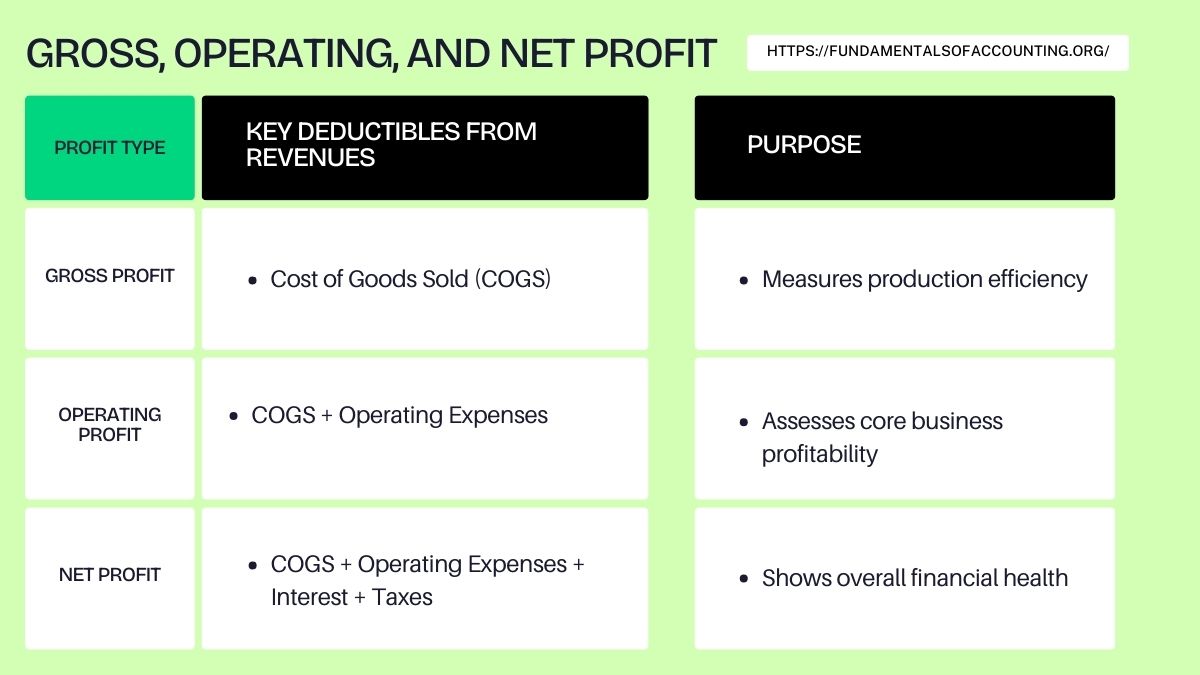Operating Profit vs. Gross Profit vs. Net Profit
While reviewing an income statement, you probably noticed the terms gross profit, operating profit, and net profit. But do you understand what differentiates one from the other?
Profitability metrics are vital for analyzing a company’s financial condition. Each one of these profits are calculated and tracked at different levels within the income statement and provide valuable information on the productivity and profit-generating capability of a company.
This article explores these three profit metrics, how they are calculated, and their significance in financial analysis.

1. Gross Profit
Gross profit is the first profit indicator that calculates the revenue of a company after subtracting the cost of goods sold (COGS). It gives a picture of how well a company makes and sells its products or services. For instance: If a company makes $500,000 in revenue and spends $200,000 in COGS, its gross profit is:
Gross profit assists in the evaluation of production efficiency. High gross profit margin indicates good cost control during manufacturing or product sourcing, while a low margin indicates high production expenses or price problems.
2. Operating Profit
Operating profit, or operating income, or EBIT (Earnings Before Interest and Taxes), is the profit that a company earns from its main activities before subtracting interest and taxes. It reflects all operating expenses, including wages, rent, utilities, and depreciation.
If, in our earlier example, the operating expenses of the company are $150,000, then the operating profit is
Operating profit shows how capable a company is in making profits out of its core business operations. Healthy operating profit signifies effective cost management and strong top-line growth. Low operating profit means operating costs are taking up too much of the revenue.
3. Net Profit
Net profit, or net income, is the ultimate profit earned by a company after excluding all expenses such as interest, tax, and other expenses. It is the best measure of profitability and is usually called the “bottom line.”
When the company has an expense of $30,000 for interest and $20,000 for tax, the net profit will be:
Net profit is the final indicator of the financial performance of a company. It measures the true earnings available to shareholders and can have an impact on investment plans, dividend policies, and strategies for business expansion.
Key Differences Among Gross, Operating, and Net Profit

Conclusion
Knowledge of the distinction between gross profit, operating profit, and net profit is vital for businesspeople, investors, and financial analysts. Each measure gives important information on various dimensions of financial performance, ranging from the efficiency of production to general profitability. Through careful tracking of these values, companies can make rational choices to improve profitability and achieve long-term financial health.